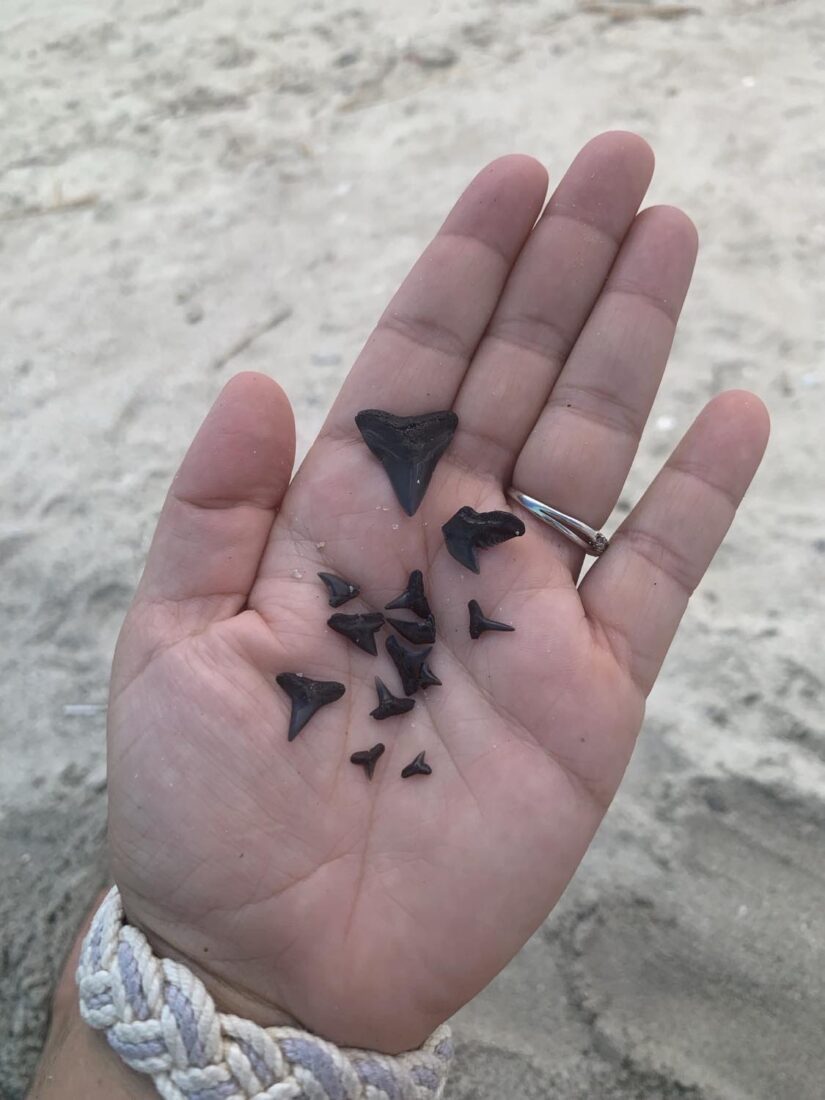In its lifetime, a single shark can lose over 20,000 teeth—a volume that, coupled with the astonishing amount of time these marine predators have lived on the planet, explains why we find so many teeth washed up on beaches. Still, each ocean-tossed artifact is a miracle of preservation and a window into deep time.

Today, 500 shark species swim the Earth’s waters, but these ancient creatures have a long and storied ancestry. At over 400 million years old, sharks predate even the dinosaurs, and the fossil record—which reflects only what we are lucky enough to uncover—indicates that some three thousand species have once existed. Sharks have thrived so impressively that some of the species we know today, like mako sharks and sand tiger sharks, look the same as they did sixty million years ago—evolution’s way of saying there’s no need to change a winning game.
As the perfect aquatic predator, sharks have rows of teeth like a conveyor belt: The biggest teeth face outwards, and when they are lost, smaller teeth in the back move up as replacements. This allows them to continuously hunt even the toughest-skinned prey with a fresh and sharp dental set.
A shark’s skeleton is famously made of cartilage, not bone, which means after it dies, all that will remain are its fin spines, dermal denticles (tiny scales that reduce drag and help the shark swim fast), and of course, teeth. When buried in a low-oxygen environment of sand and sediment, these teeth can absorb surrounding minerals and become fossilized (a process called permineralization). The preserved specimens are usually dark in color due to absorption of phosphate, a jet-black mineral.
The South, with its miles of easily accessible Atlantic and Gulf coastlines, is a great place to hunt for shark teeth. Below, get a look at seven of the many types a Southern beachcomber might encounter.
Megalodon
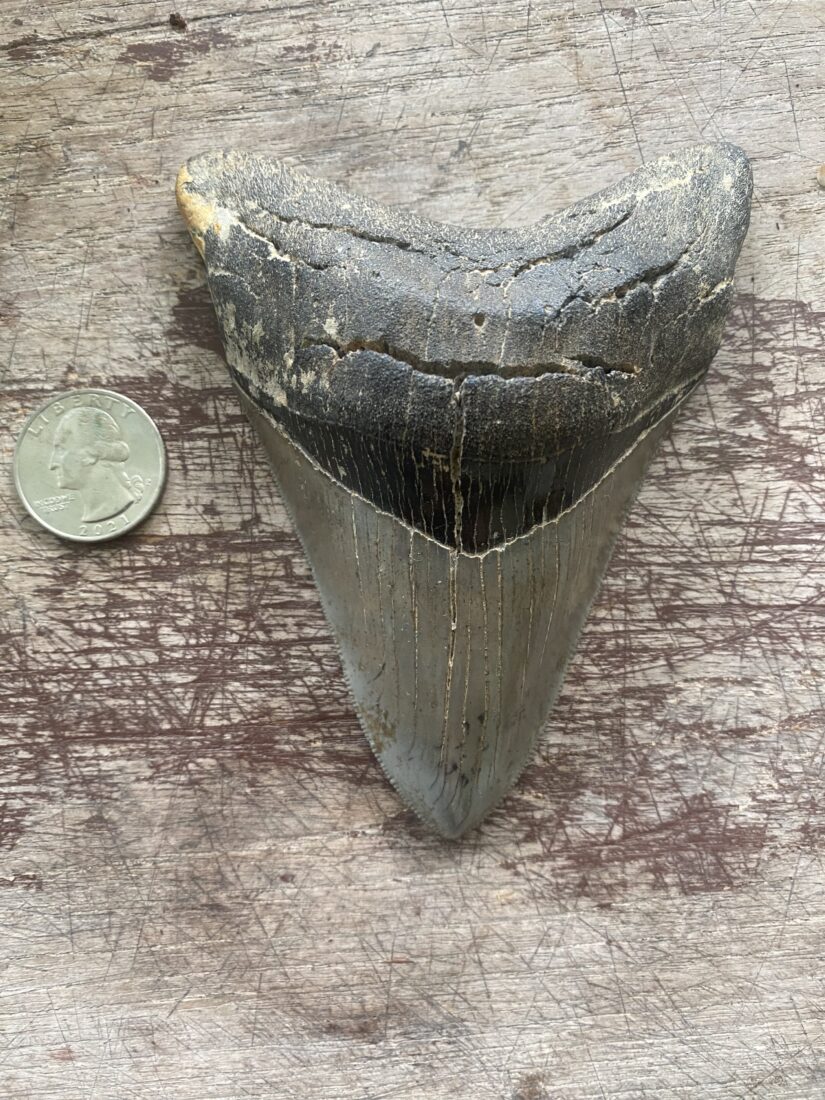
Unquestionably the most famous prehistoric shark—and prized source of teeth—is the mighty Otodus megalodon, a huge predator that stretched sixty feet in length and presided over the seas from 17 million years ago up to around three million years ago. The teeth of the largest shark that ever lived are identifiable by size alone—they are thick and can hit seven inches long. They also feature serrated edges and a V-shaped dental band on the inner face of the tooth above the root.
Carcharocles angustidens
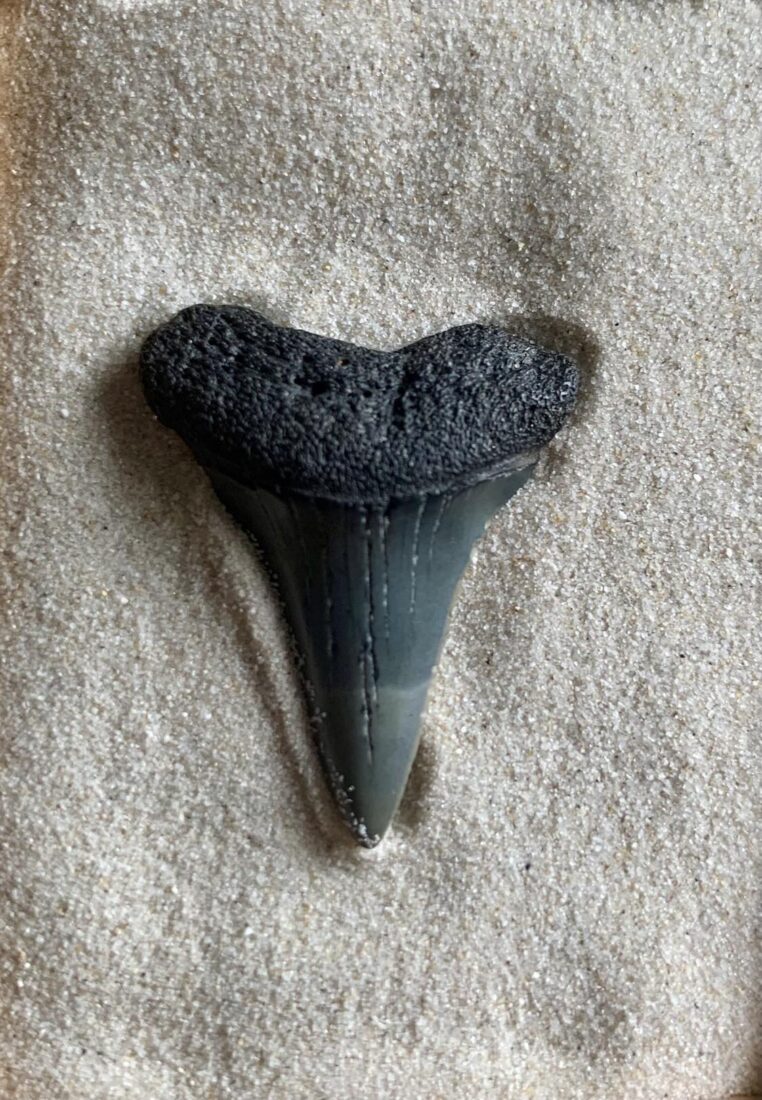
This extinct species is an ancestor of today’s great white and lived about 35 to 22 million years ago. Though not quite as large as megalodons, their teeth can reach five inches in length and are characterized by triangular crowns and small, fully serrated side cusps.
Parotodus benedeni
It’s hard to find teeth from this extinct mackerel shark—they’re hundreds of times rarer than megalodon teeth—because they lived from around fifty to one million years ago in the open ocean, rarely coming near the shore. The species stretched about twenty-five feet long, and their teeth are large and triangular and look a bit like a claw, which aided in hunting bony fish and large marine mammals.
Galeocerdo cuvier
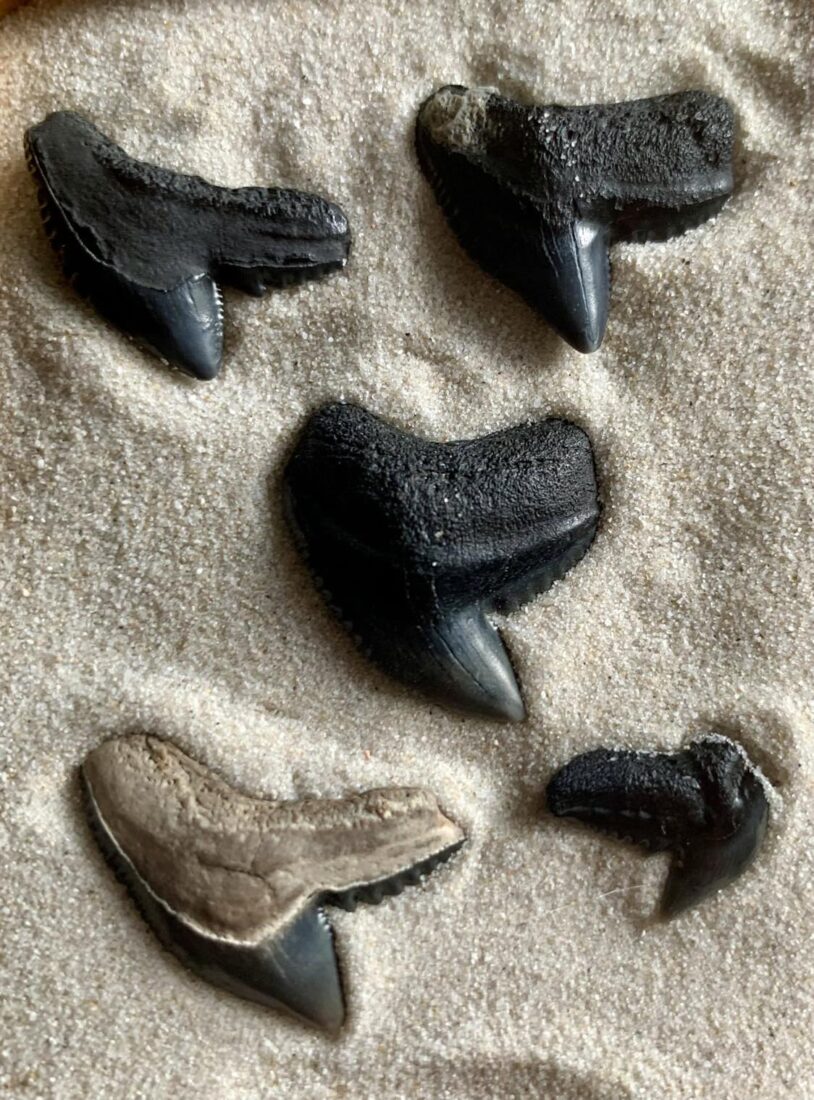
The teeth of tiger sharks reflect the fact that they go after large and sometimes tough prey: They’re curved, double-serrated, and so strong they can saw through sea turtle shells. Tiger shark teeth fossils date back some 60 million years, and the species is still going strong.
Carcharodon carcharias
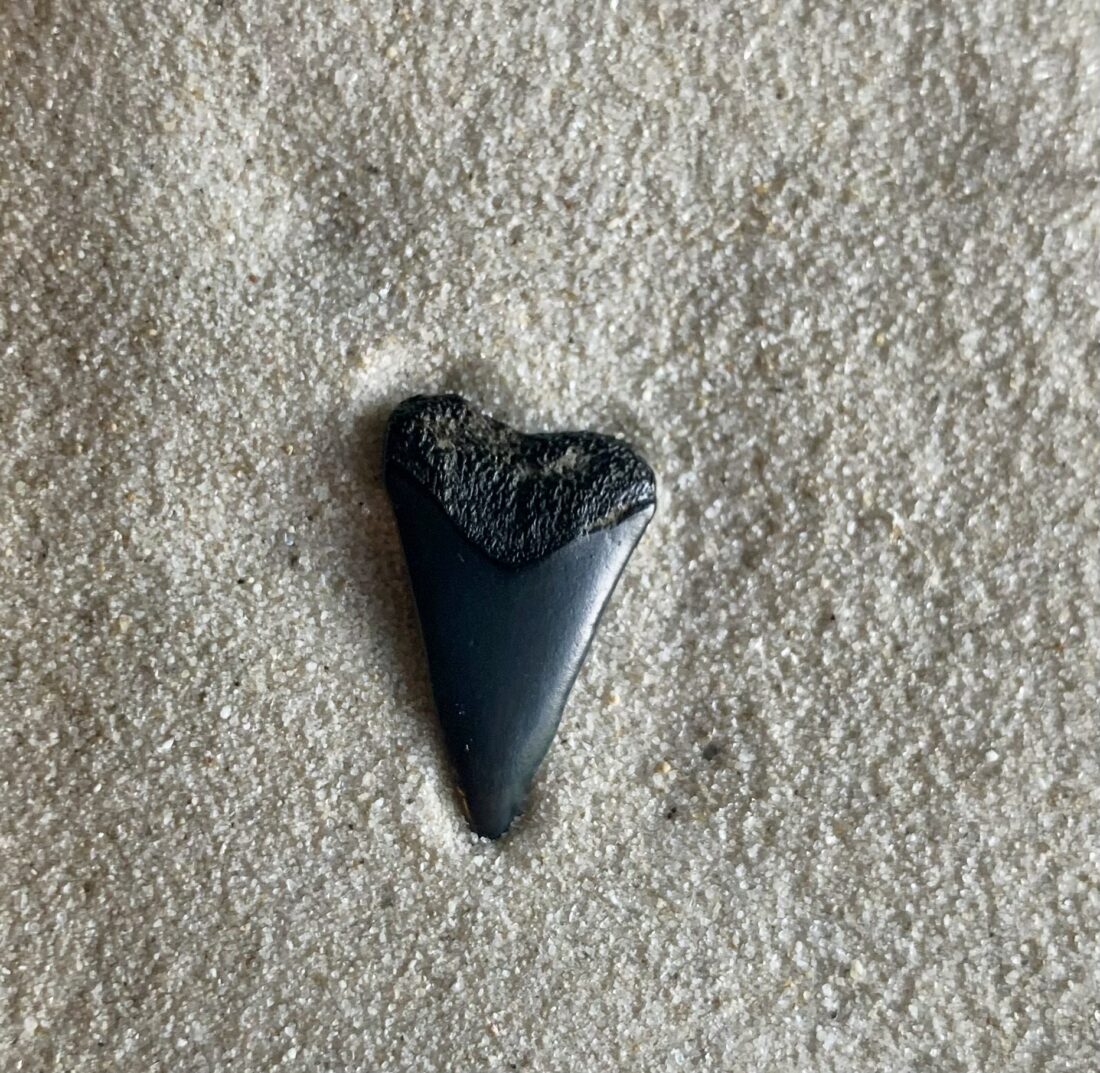
Great white sharks, which live all over the world, are the largest predatory fish alive today. Their teeth are triangular, broad, and flat, with coarse serrations—and there are plenty of them. An individual set rings in at about 300 teeth arranged in up to seven rows.
Carcharias taurus
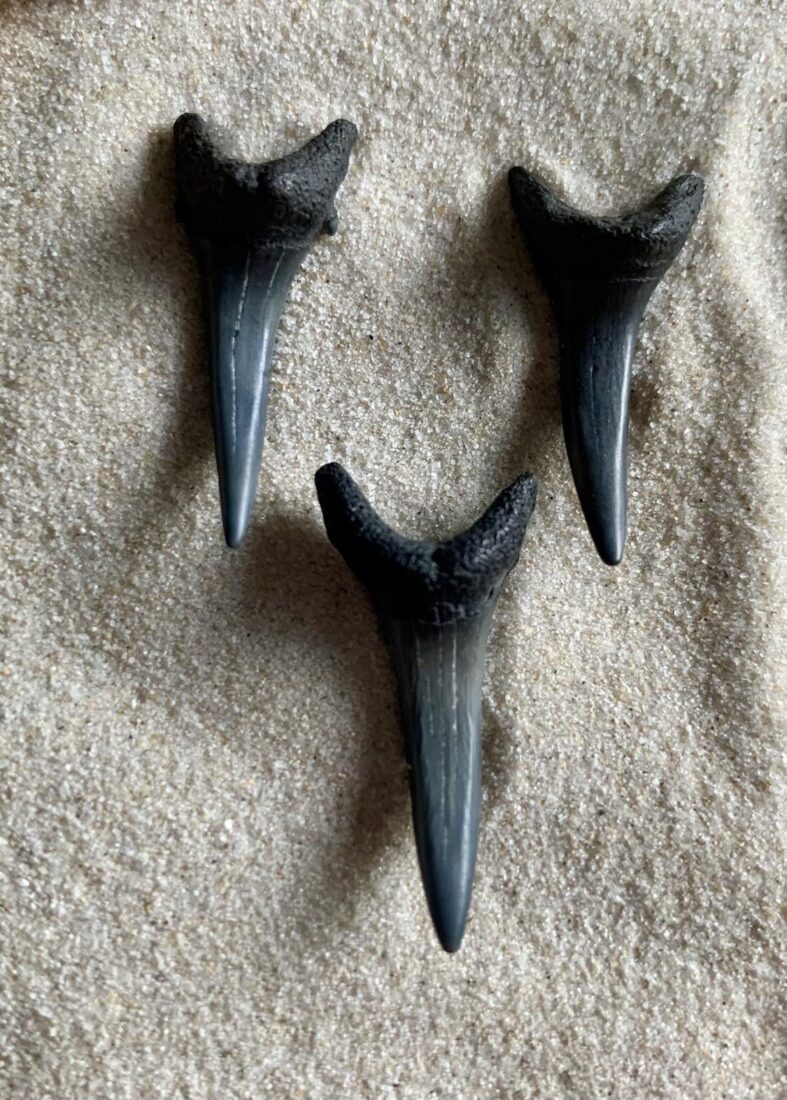
Sand tiger sharks (also called gray nurse sharks) are a modern coastal species up to ten and a half feet long. They have a flattened, conical snout with three rows of protruding snaggle teeth, which feature long and narrow primary cusps with small lateral cusplets.
Carcharhinus leucas
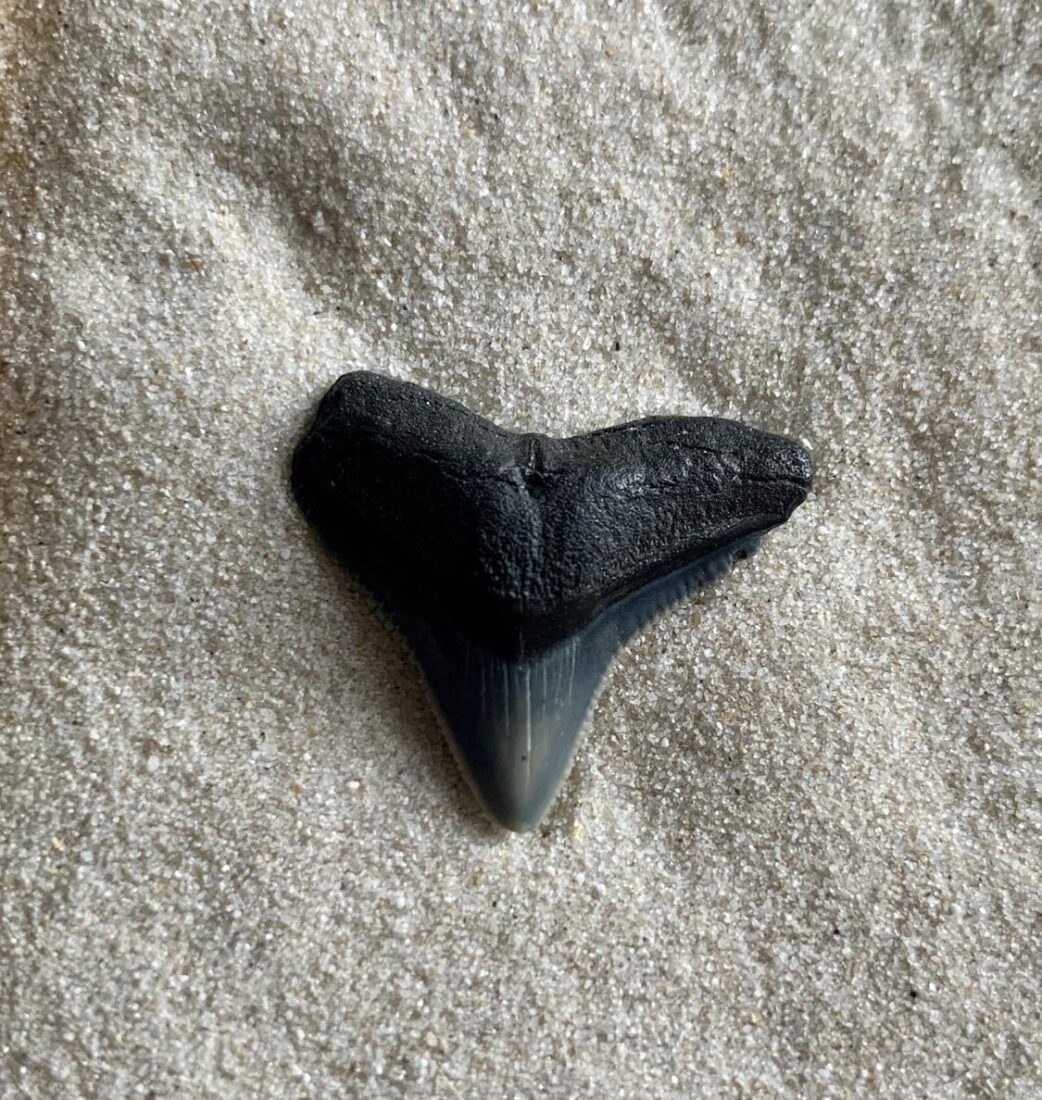
The stocky bull shark lives in coastal waters all over the world and can even survive in freshwater thanks to specialized kidneys and glands near their tails. They have inch-long teeth with flat and broad blades, notable for their tapering serrations.
Love a good shark tooth search? Find the best beaches to scour in the South here, and get tips for how to find the teeth from a paleontologist here.


